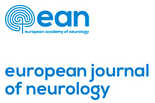 Muscle-strengthening, stretching or proprioceptive treatments may slow symptom progression in Charcot-Marie-Tooth (CMT) neuropathy. The aim of the study was to evaluate safety and efficacy of treadmill training in CMT1A.
Muscle-strengthening, stretching or proprioceptive treatments may slow symptom progression in Charcot-Marie-Tooth (CMT) neuropathy. The aim of the study was to evaluate safety and efficacy of treadmill training in CMT1A.
The authors planned a multicenter, prospective, randomized, single-blind, controlled study. They recruited 53 outpatients affected by CMT1A and randomized them into two treatment groups: one underwent stretching and proprioceptive exercise, whereas the other was additionally treated with treadmill training (TreSPE). Primary outcome measures (OMs) were the walking evaluations and secondary OM was the balance assessment. All participants were assessed at baseline and after 3 and 6 months of treatment.
Most patients showed an improvement in at least one OM after 3 months [42/47 (89.4%)] and 6 months [38/40 (95%)] of treatment. No adverse events were reported in either group.
The most important finding was that both stretching and proprioceptive exercise and treadmill training had an objective benefit on patients affected by CMT disease, without causing overwork weakness. We had a low rate of drop out and did not find deterioration in motor performance. These results also confirm that applying evidence-based medicine methods to rehabilitative research is the correct way to test the efficacy of a treatment.
